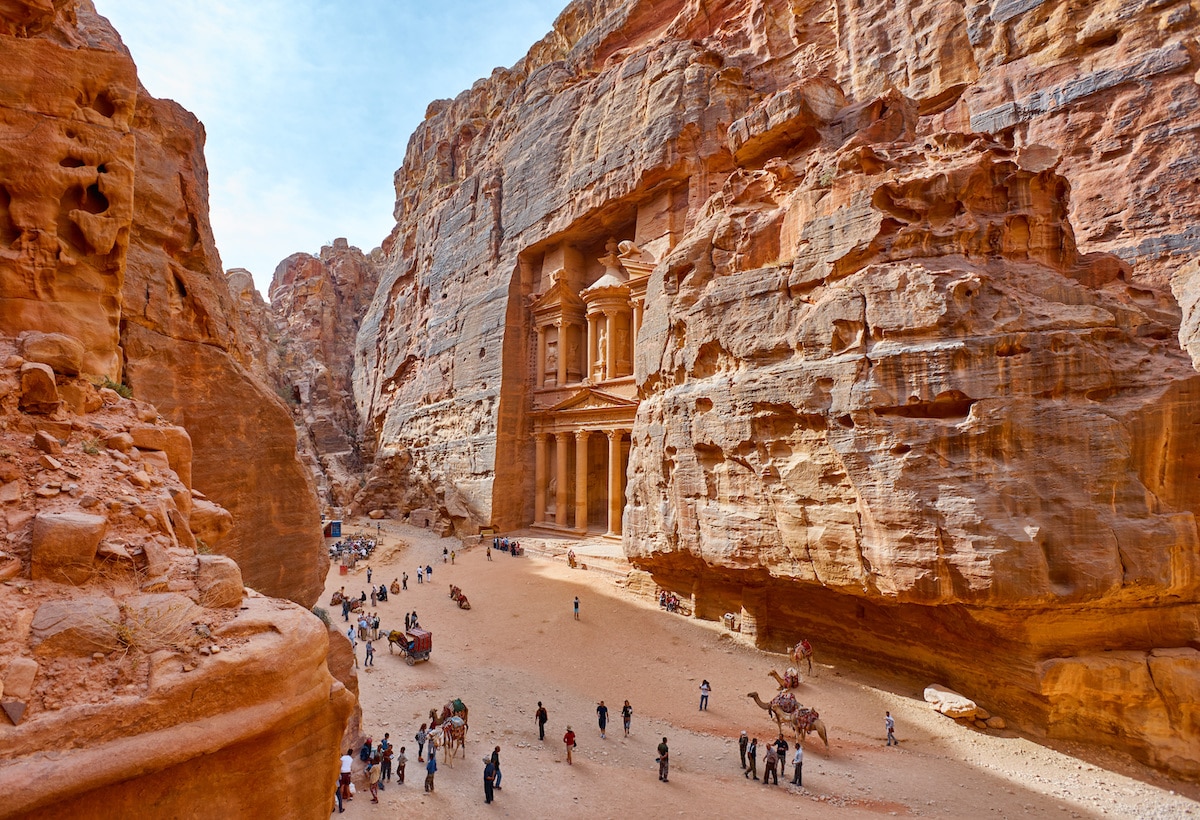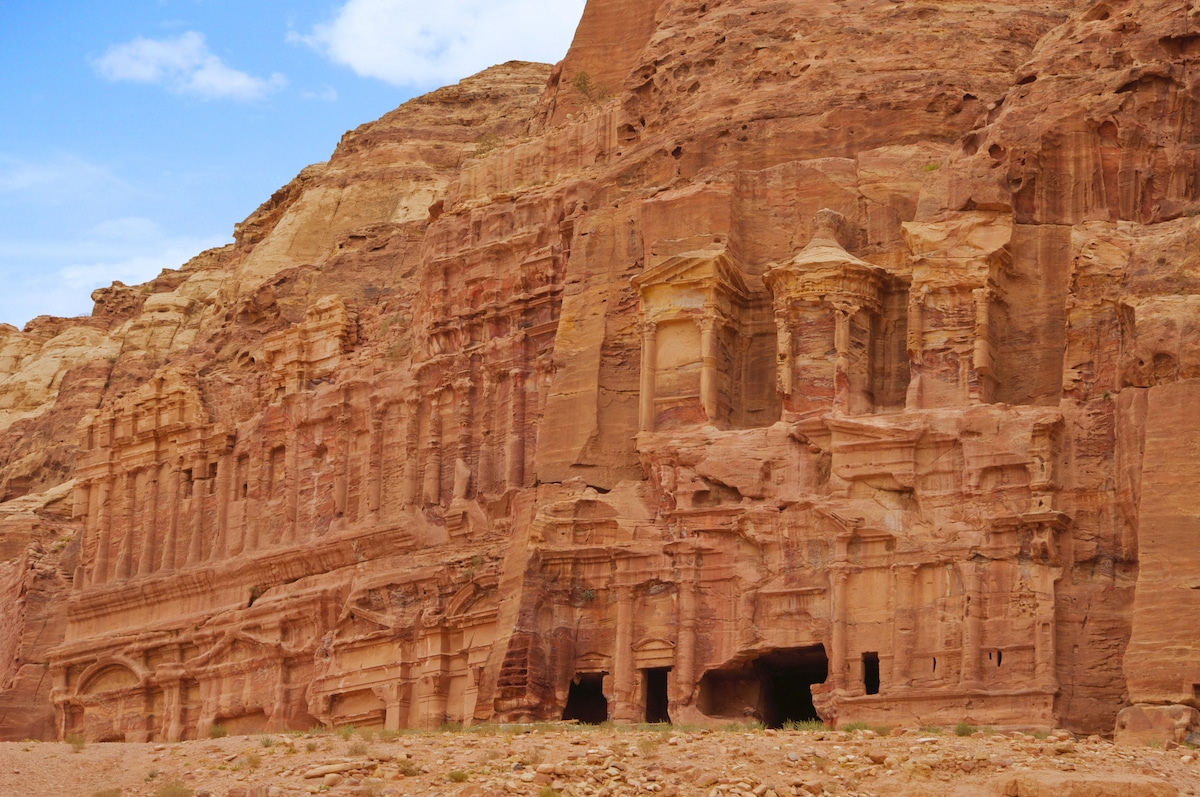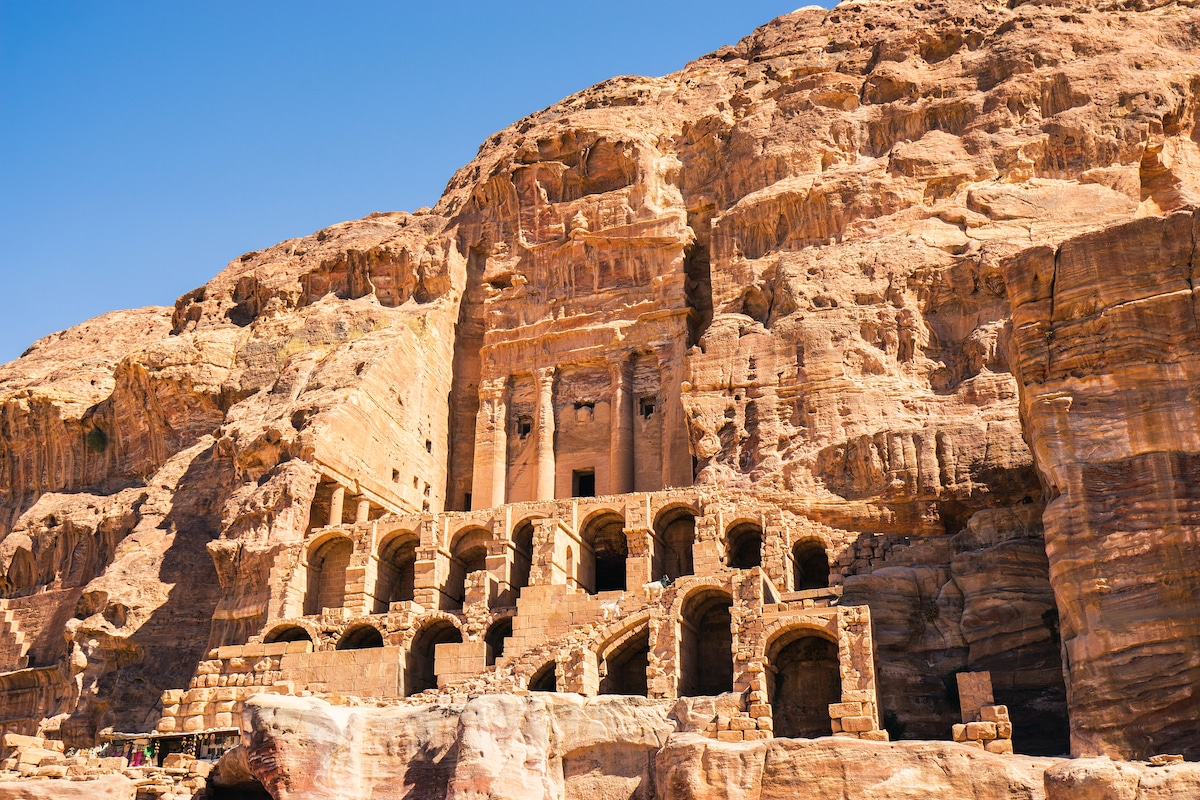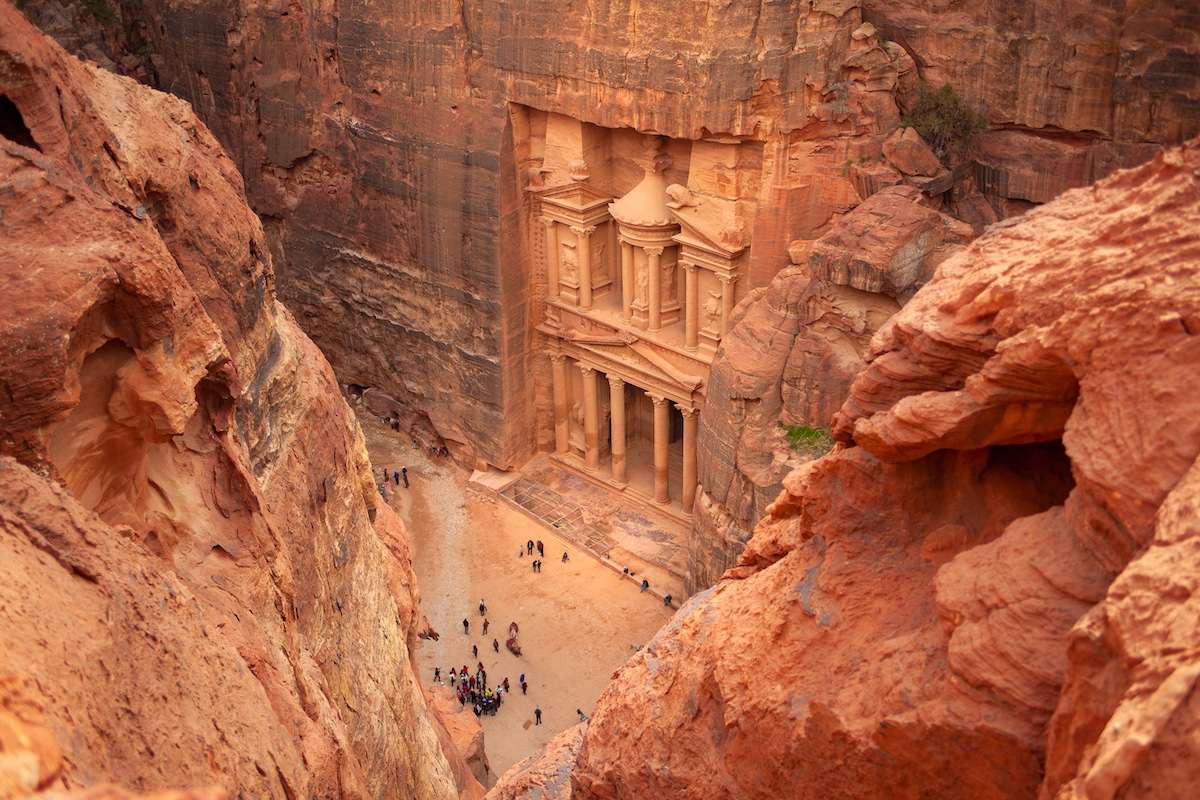Discover the enthralling history of Petra, a once-lost city that is now considered a World Heritage Site.
The ancient city of Petra, also known as the Rose City, is a breathtaking wonder that must be seen to be believed. It’s a UNESCO World Heritage Site and was founded in the 4th century BCE, once serving as a major trading hub. Carved into red sandstone cliffs, Petra’s unique architecture has earned it a place among the New Seven Wonders of the World. Located in the desert canyons of southwestern Jordan, it was the capital of the Nabataean civilization and today operates as a museum.
Covering 102 square miles, Petra attracted over a million visitors last year. Surprisingly, only 15 percent of the city has been uncovered, leaving 85 percent still buried beneath the earth, waiting to be explored.
Even if you haven’t visited Petra, you may recognize it from films like *Indiana Jones and the Last Crusade*, *The Mummy Returns*, and *Aladdin*, where its stunning architecture was used as a backdrop.
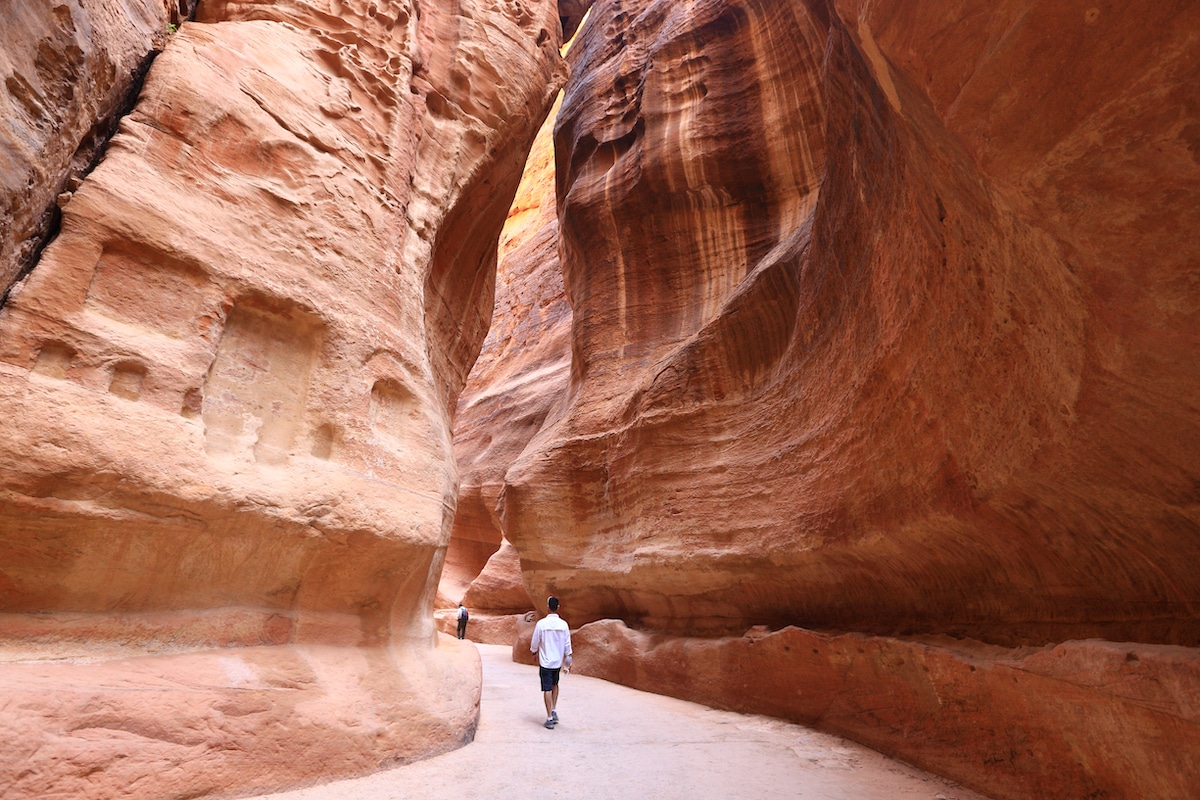
When visitors arrive at Petra today, they follow the same path that traders and travelers have used for thousands of years. This journey begins with the Siq, a long and winding gorge that sets the stage for the wonders beyond. The three-quarter-mile stretch, which means “the shaft,” builds excitement as you approach the main site. Along the way, you’ll see carvings of camels and niches that once held Baetylus—stone representations of gods—and other decorations.
Though the walk may seem long, it’s well worth it. Soon, you’ll catch your first glimpse of Petra’s iconic architecture, a sight that makes the journey unforgettable.
The Nabataeans
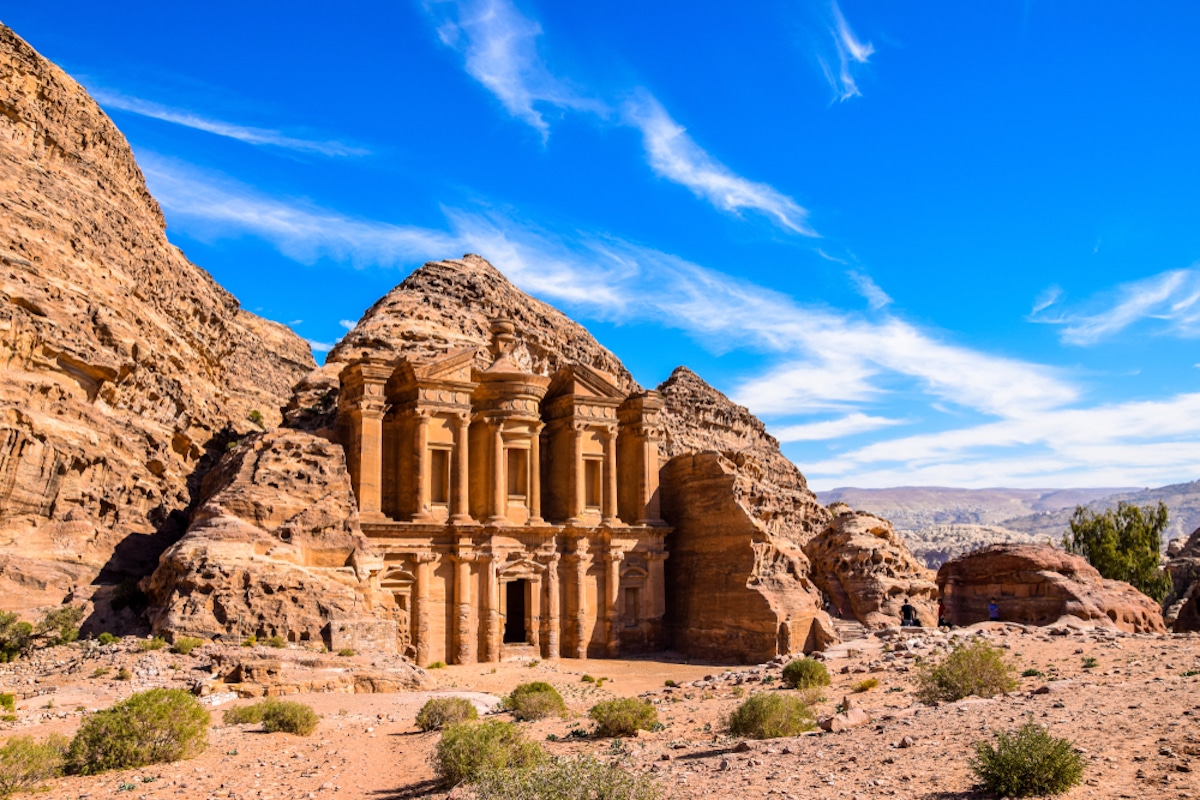
The Nabataeans were a nomadic Bedouin tribe that roamed the Arabian desert and eventually built the city of Petra. They became a powerful political force between the 2nd and 4th century BCE and established Petra as their capital, though they originally called it Raqmu.
The Nabataeans thrived for thousands of years, largely due to their control over key trade routes that connected the ancient world. Their involvement in international trade exposed them to various cultures from the Mediterranean and Arab regions, which influenced their religion and culture.
Petra, home to around 30,000 people, stands as a symbol of their wealth and influence. Its location made it difficult to conquer, but after the Romans defeated the Nabataeans, the city continued to grow. Roman architectural influence, especially visible in the famous Treasury, became part of Petra’s landscape.
Although the Nabataean kingdom was absorbed into the Roman Empire in 106 CE, it lasted for centuries. Over time, however, the kingdom declined, and its lands were divided among other Arab groups. The reasons for their downfall remain unclear.
The Rediscovery of Petra
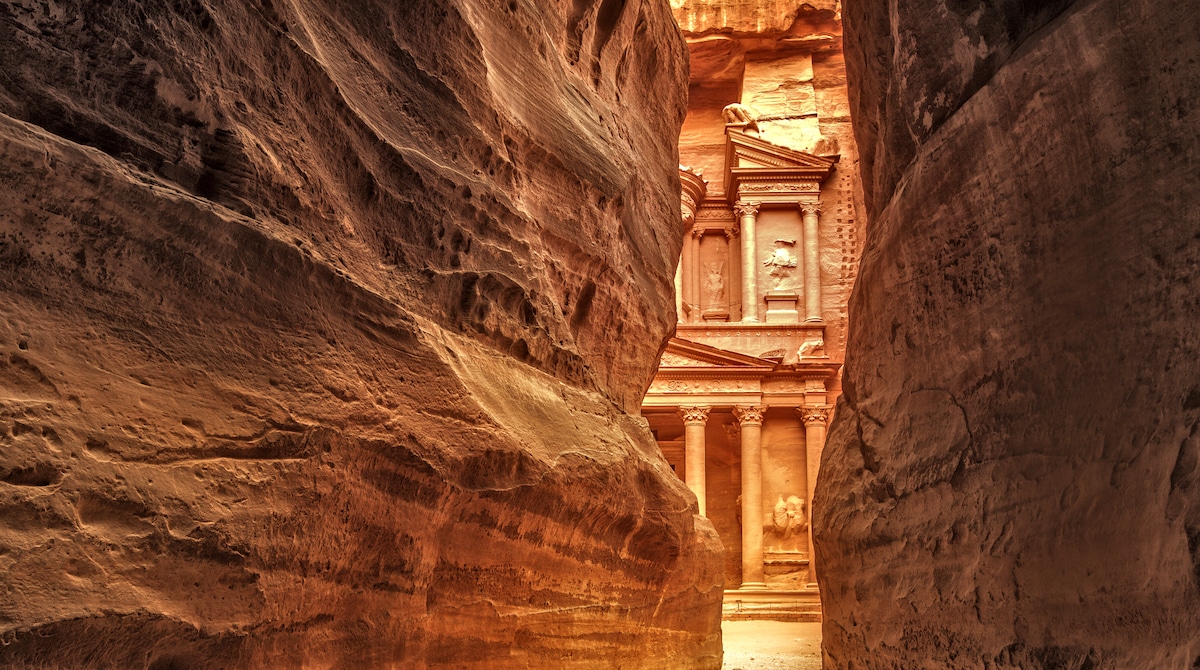
After the eighth century CE, Petra was largely abandoned, though nomadic shepherds continued to use its structures for shelter. For over a thousand years, the city remained unknown to the outside world. That changed in the 19th century when Swiss explorer Johann Ludwig Burckhardt “rediscovered” the ancient city.
While studying Arabic in Syria, Burckhardt heard a story about a German explorer who had been killed while searching for Petra. Intrigued, he decided to investigate. To blend in, Burckhardt took on the identity of Sheikh Ibrahim Ibn Abdallah and spent several years in Aleppo before embarking on a journey to Cairo, hoping to pass through Petra along the way.
While traveling through Jordan, Burckhardt heard local stories about ancient ruins. Suspecting this was the fabled Petra, he pretended to seek a site for a goat sacrifice and asked a local guide to take him to the tombs. This led him through the Siq, and in 1812, he became the first Westerner to set eyes on Petra in over a millennium.
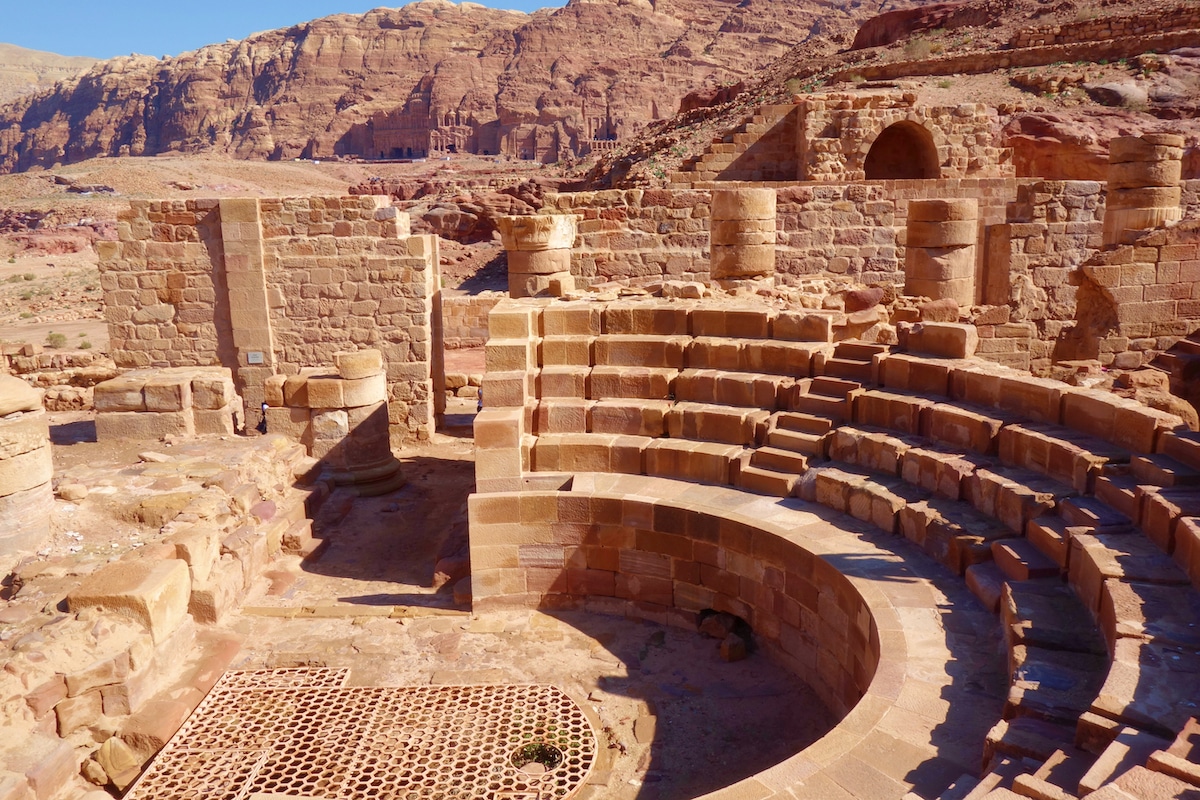
When Johann Ludwig Burckhardt reached Petra, he was struck by its beauty, writing, “An excavated mausoleum came into view, the situation and beauty of which make an extraordinary impression on the traveler, especially after walking for nearly half an hour through such a dark, almost subterranean passage.” In his book, Burckhardt referenced writings from Reland’s *Palestina*, suggesting that the ruins of Wady Mousa were indeed those of the ancient city of Petra. He also noted that Eusebius had mentioned Aaron’s grave near Petra. Based on all the evidence he gathered, Burckhardt was convinced there were no other ruins between the Dead Sea and the Red Sea that could compare in significance to Petra.
After Burckhardt’s remarkable discovery, many Western explorers visited Petra to create detailed drawings of its structures and study its architecture. This helped showcase Petra’s natural beauty to the world.
Al Khazneh
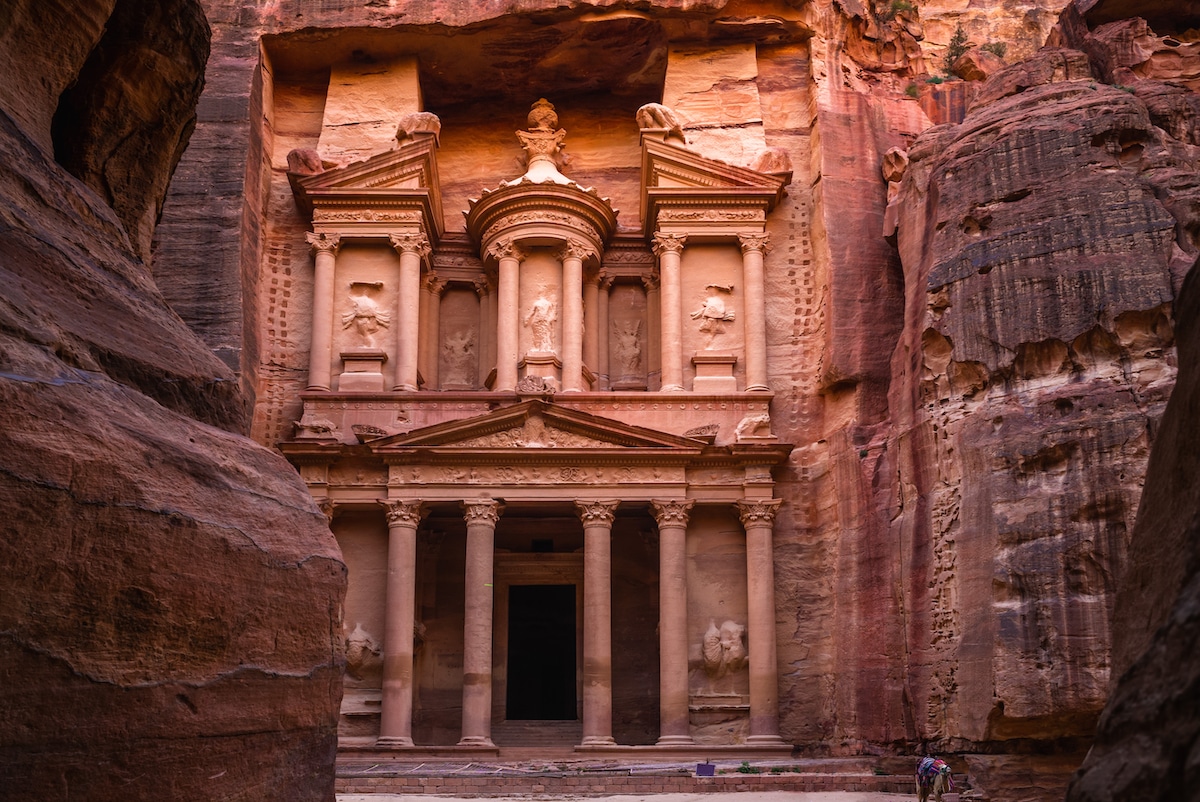
The Treasury, or Al Khazneh, is one of Petra’s most iconic landmarks. Carved into the red sandstone cliffs, it stands 127 feet tall and nearly 82 feet wide at the entrance to Petra from the Siq. The intricate design reflects its importance, with Hellenistic influences seen in its floral motifs, figurative decorations, and architectural elements like columns and pediments, similar to ancient Greek temples.
Although it’s called the Treasury, it’s actually a tomb. Archaeologists believe it was likely the burial place of a Nabataean king or queen, due to its prominent location. However, no coins or artifacts have been found to confirm its exact date or who it was built for. The most likely candidate is King Aretas IV, who ruled from 9 BCE to 40 CE, during Petra’s peak when many of the city’s monuments were being constructed.

So why is it called the “Treasury” if it’s actually a tomb? In the early 20th century, Bedouins believed that the urn on the second floor of the structure contained treasure from an Egyptian Pharaoh. They were so convinced that they even shot at it, hoping to release the hidden riches. While the treasure wasn’t real, the name stuck.
The Treasury also gained more fame when it was featured in *Indiana Jones & the Last Crusade* as the location of the Holy Grail, one of the world’s legendary treasures.
Millions of visitors come to Petra each year to take in the spectacular architecture and marvel at the prehistoric civilization that made such a lasting influence on the world.
